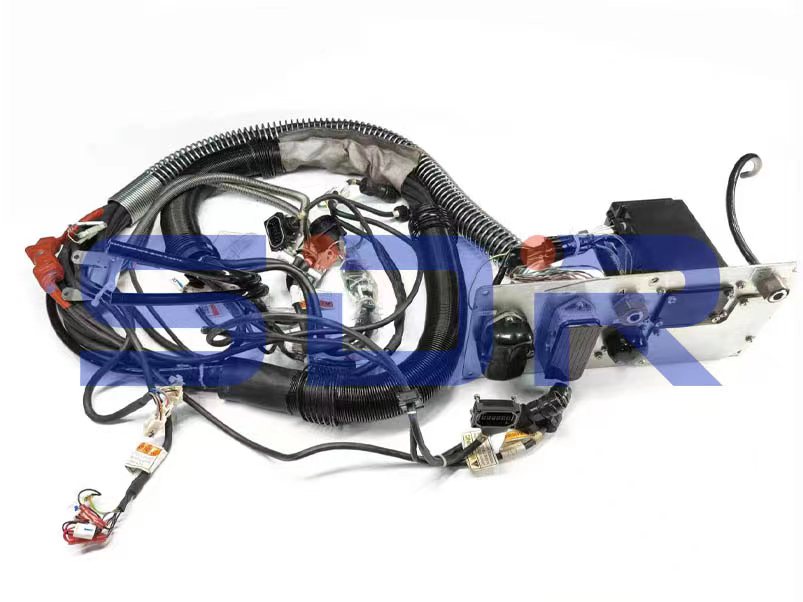The Yaskawa Cable Robot 1-6 Axis Body Cable is a high-performance cable designed for Yaskawa robotic systems and is intended to provide stable and reliable data transmission and power supply. It offers high flexibility, durability, and efficient data transmission for a variety of industrial environments.

Preparation for Installation
Required Tools and Materials,Before installing the Yaskawa Cable Robot 1-6 Axis Body Cable, be sure to prepare the following tools and materials:
Screwdrivers (Phillips and One)
Pliers
Cable ties
Insulation tape
Wire strippers
Multimeter
Cleaning cloths
Safety gloves and goggles
Safety measures
The following safety measures are to be observed during installation:
Ensure that the installation area is free of electricity and marked as a work area.
Wear appropriate personal protective equipment such as safety gloves and goggles.
Avoid operating in wet or flammable environments.
Observe all relevant safety codes and operating instructions.
Installation Procedure
Unpacking and Inspection:Open the package and check if the cable is intact. Check the cable labelling to ensure that the type and specification meet the requirements. Confirm that all necessary accessories and installation instructions are included in the package.
Cable routing: Determine the routing path of the cable to ensure that the path is shortest and free of obstacles. Avoid routing cables over sharp edges or hot areas to prevent cable damage. Secure cables in place with cable ties to ensure no looseness and no excessive tension.
Cable Connection:Connect one end of the cable to the appropriate connector on the Robot Controller according to the installation instructions. Make sure the connection is secure and not loose. Connect the other end of the cable to each axis of the robot, from 1 to 6 according to the labelling. Wrap the connectors with insulating tape to ensure safety and insulation.
Grounding: Ensure that the cable system is well grounded to avoid static build-up and electromagnetic interference. Use a multimeter to check the grounding resistance to ensure that it is within the safe range.
Precautions for use
Daily Inspection:Regularly check the appearance of the cable to ensure there is no wear, cracks or other damage. Confirm that the cable is firmly connected and not loose or detached. Check the environment around the cable to ensure that there are no interfering objects or dangerous elements.
Bend radius and tension:During use, ensure that the bend radius of the cable is not less than the minimum recommended by the manufacturer. Avoid applying excessive tension to the cable to prevent the internal conductors from breaking.
Temperature and environmental requirements:Ensure that the temperature of the cable's operating environment is within the manufacturer's recommended range. Avoid exposing the cable to excessively high or low temperatures to prevent material deterioration and loss of performance. In environments with high humidity or corrosive gases, additional protective measures should be taken.
Maintenance and care
Regular Inspection:Conduct a thorough inspection once a month to record the use of the cable and any abnormalities. For frequently used robots, a quick weekly check is recommended.
Cleaning method:Wipe the cable surface with a dry, clean cloth, avoiding the use of chemical solvents. For deep cleaning, use a special cleaner recommended by the manufacturer and ensure thorough drying after cleaning.
Troubleshooting and Disposal:If any damage or abnormality is found on the cable, stop using it immediately and check the cause of the problem. Common faults include: cable breakage, loose connection, unstable signal transmission, etc. Repair or replace according to the specific situation, and contact a professional technician if necessary.
Frequently Asked Questions
Can the cable be used outdoors?
The Yaskawa Cable Robot 1-6 Axis Body Cable is normally designed for indoor use, but if it is to be used outdoors, it is necessary to ensure that it is properly protected.
What temperature can the cable withstand?
Please refer to the technical data in the datasheet for the cable's specific operating temperature range, which is generally between -20°C and +80°C.
How can I confirm that the cables are connected correctly?
Use a multimeter to check the conductivity and voltage of each contact to ensure that the connection is correct and the signal transmission is stable.
The Yaskawa Cable Robot 1-6 Axis Body Cable is a high-performance cable designed for industrial robots that excels in reliability and durability in a variety of harsh environments. By following the installation and maintenance procedures in this User Guide, you can maximise the life of the cable and ensure stable operation of your robot system. Whether in manufacturing, the automotive industry, or other fields, Yaskawa cables provide excellent support to fuel efficient automated production.